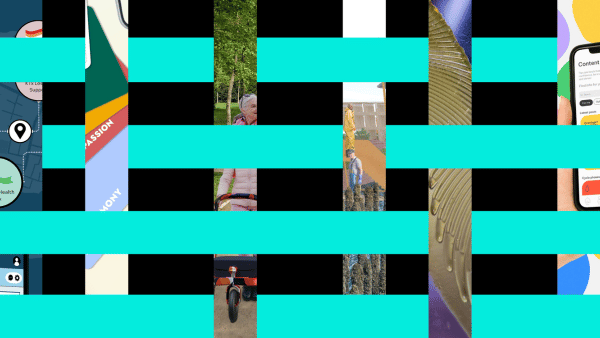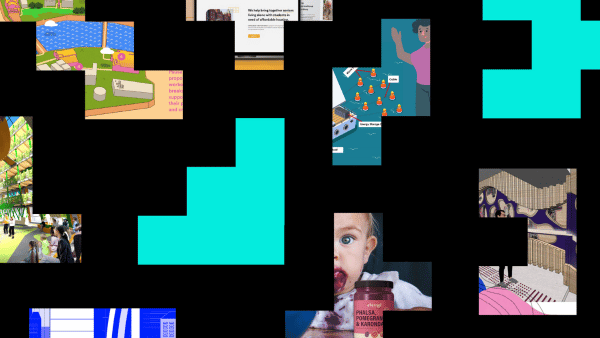The world faces existential sustainability issues – a global problem requiring a societal response – yet the design industry reflects a tiny segment of our society. Ben Pearson’s research examines how much damage this is doing, and how we can make things better
There is a lack of ethnic diversity and gender diversity across the design industry generally. Within certain sectors, it’s dramatic. Industrial design is reported by the Design Council to be 95 per cent male. But very little is known about other divides, especially socio-economic background, and what impact these have. Specifically, how do different people think about sustainability and what this means for societal response to the sustainability crisis?
The RSA ‘Design for Life’ mission to unlock social opportunity through social innovation, to regenerate people, place and planet, has as a central requirement that it draw on a societal response. Meanwhile, DEFRA calls for an inclusive societal vision, for a just transition towards the generation of sustainability. But it does so without an apparent understanding of how people perceive sustainability, what factors contribute to these views or if there are any correlations in views across society. This makes producing a shared vision and collective societal response near impossible.
The aim of my research is to help by exploring the impact of diversity within sustainable thinking in UK design undergraduates, to identify points of intervention, account for multiple perspectives and assess what factors lead to increased sustainable outcomes within the context of the sustainable development goals.
The objective of this first study is to explore if there is any correlation between the nine diverse characteristics set out in the UK 2010 Equality Act including indications of socio-economic background with perceptions of sustainability, the importance of Sustainable Development Goals and sustainable attitudes, behaviours and knowledge.
To gather as much data on this as possible, I’ve designed a questionnaire, which I’m trying to get into the hands of as many current undergraduate designers and creative artists studying in UK university design and art schools as possible. I want to reach every design and creative arts school in the UK, and I’m asking you, as RSA Fellows, to help drive this vision for a more equitable sustainable design future. You’ll find the questionnaire here, for you to complete or share. It’s an ambitious aim, but if we are going to make a change, we need to be ambitious.
The questionnaire will only take 10 minutes to complete, and any help RSA Fellows can provide would be enormously appreciated but also help develop a deeper understanding of the impact of diversity within sustainable thinking.
Thank you in advance and if you are still reading, great! A little a bit about why I am doing this. Prior to undertaking a PhD, I had spent eight years working as a design consultant across medical and clean-tech projects. This led on to doing an MBA, and an epiphany during one lecture on diversity and inclusion. As a white, male, non-disabled, state-educated designer, I became consciously aware of the implicit bias that will without doubt have affected my designs and creativity throughout my career.
Then I thought back to my time at university and throughout my career to the people I had met and worked alongside – and had a stark realisation of the lack of diversity within the design industry. I started wondering, what is the impact of diversity within design on sustainable future? Not only the traditional environmental issues but with a particular focus on social sustainability.
I hope this research can help develop a sustainable future by promoting diversity and inclusion from an educational, strategic and policy level, leading to increased creativity, deeper innovation and the successful uptake of sustainable technology.
Ben Pearson is researching his PhD, an ‘Investigation into the Impact of Diversity on Sustainable Design Outcomes within UK Higher Education’ at Loughborough University’s School of Design & Creative Arts. He is looking to share his research area. You can contact Ben through the university or on LinkedIn

Become an RSA Fellow
The RSA Fellowship is a unique global network of changemakers enabling people, places and the planet to flourish. We invite you to be part of this change.
Related articles
-
Student Design Awards 2024: meet the shortlist
News
Aoife O'Doherty
The RSA Student Design Awards 2023 shortlist has been announced. Across nine briefs, 70 students are working to bring positive social change to people, place and planet.
-
Student Design Awards 2023: meet the shortlist
News
Aoife O'Doherty
The RSA Student Design Awards 2023 shortlist has been announced. Across nine briefs, 70 students are working to bring positive social change to people, place and planet.
-
Last word: brand
Feature
Sairah Ashman
Sairah Ashman discusses what lies beneath the surface in a world awash with logo.




Join the discussion
Comments
Please login to post a comment or reply
Don't have an account? Click here to register.
A survey of the balance across all creative arts & design disciplines would be interesting. While historically 'industtial design' has been dominated by male students , fashion design has been by female students. At the recent RSA Student Awards 2022 of 20 successful winners 19 were female and one was male. Had it been the other way round what do you think would be said? There may be good reasons. If not, 'two wrongs do not make a right' imho. Worth investigating why?
Coming too late for your questionnaire, but Cambridge University's Faculty of Architecture will be introducing a Masters Degree course in Design from 2024. The faculty works hard to promote diversity, sustainability and stuff, so it might be smart for the RSA to get in on the ground floor.